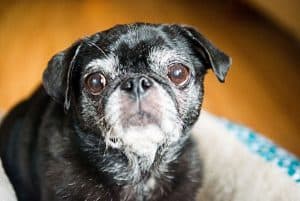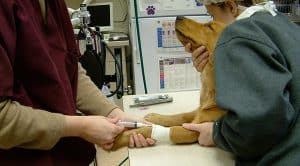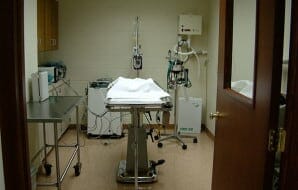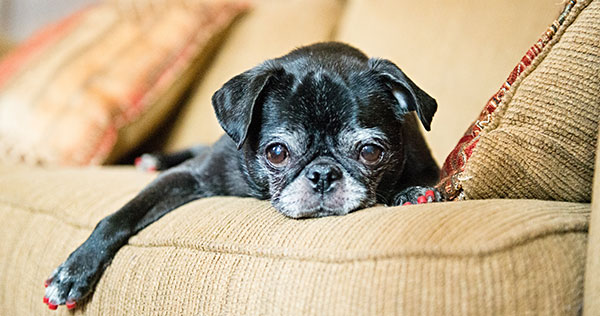how to clean a ruptured abscess + dog
When is a dog too old for anesthesia?
Senior dog anesthesia is a calculated risk.
As a veterinarian, I have a healthy respect for anesthesia and understand my clients' fears. Anesthesia is essentially the process of taking a living being to the brink of death—obliterating many life-preserving reflexes—and then bringing that being back to life again. It is never, ever without risk. But that risk should be carefully calculated from the start—weighing risk versus reward.
Losing a patient under anesthesia is 1000% horrible—no silver lining. A decade ago, I lost a patient named Teddy under anesthesia. Teddy was probably over 100 in "human years," which, of course, was a concern as we considered anesthesia for an elective procedure. His mouth was a bowl of pus soup, so it was my professional opinion that the benefits outweighed the risks for Teddy having a complicated dental procedure involving over a dozen extractions. For sure, I can say it's what I would have done for my own dog.
Anesthesia for oral surgery in senior dogs

Teddy's mom agreed that he was in a lot of pain and that the anesthesia for oral surgery was a risk worth taking. He might have been in his golden years–when many would argue anesthesia is just not worth it–but the hope of eliminating his pain made the decision obvious. I contacted board-certified anesthesiologists before the surgery to discuss my concerns and formulate a customized anesthetic protocol based on Teddy's age, lab results, and physical condition.
The procedure took over two hours and Teddy's vital signs were textbook. No red flags. I worked as swiftly as I could to extract the abscessed teeth and suture the flaps of gum left behind. Meanwhile, my conscientious technician monitored Teddy's anesthetic depth, heart rate, respiratory rate, temperature, blood pressure, and blood oxygen levels, and we made adjustments in Teddy's anesthesia accordingly. She carefully recorded this data every few minutes on a chart, which she held on a clipboard, so we could monitor trends.

When the unexpected happens…
Finally, I tied the last suture and stood up to stretch my aching back. I'd been leaning over Teddy's mouth for hours. "Done!" I shouted in triumph. I expected this surgery would be life-changing for this dog. I knew that Teddy would have a few rough days, during which we would be aggressive with a cocktail of pain medications. But then, as he began to move into the healing phase, I truly believed he would be a different dog—acting years younger. Major dental work can be a fountain of youth for senior pets. I had witnessed this transformation dozens of times. I couldn't wait to watch him bloom.

While I was dreaming of his bright future and stomping my numb leg, the technician turned off the anesthetic gas. This allowed Teddy to breathe pure oxygen from the machine as we cleaned up his mouth, which was standard procedure. Seconds later, Teddy veered off the normal path of recovery. Instead of slowly waking up…Teddy died. He was still connected to all of our monitors and their alarms began to scream. He had no heart rate. No pulse. No respiratory rate. We immediately began chest compressions and breathing for him through the anesthesia machine. All hands were on deck as drugs were drawn up and pumped into his veins, and even right into his heart.
Loss and love…grief and grace
As the scene unfolded, my mind jumped to Teddy's family. Here he was, dying in my care, and his family was elsewhere, going about their day, unaware of the crisis. It wasn't right for them to be out of the loop. They needed to come immediately. My receptionist got a family member on the line so I could briefly alert them that Teddy had taken a turn for the worse.
By the time they arrived, Teddy was officially gone. The grief in our office was palpable, shrouding the soul of every one of us in the building. I will never forget the reaction of Teddy's parents, which I was dreading. They wept with us–and they extended an incredible amount of grace. They knew we did our best and they told us so.
Once again, I reached out to the same specialists who helped me strategize the anesthetic protocol we had used for Teddy. I explained the entire story and provided the data which we had charted on the clipboard. They all arrived at the same conclusion: Teddy had most likely suffered a pulmonary embolism–a clot which blocked blood supply between the heart and lungs. We couldn't have foreseen this. There was nothing that we could have done. But that didn't change that fact that Teddy was gone, and I had been responsible for his life that afternoon.
While this situation was incredibly tragic, what happened to Teddy is not common. Studies show that approximately 99.9% of healthy dogs that are anesthetized live to tell about it. While it's true that age and infirmity are risk factors that make the odds less rosy, through custom-tailored anesthetic protocols and diligent monitoring of patients under anesthesia and in recovery, I believe the rewards often outweigh the risks.
Caring for a senior pet often means making difficult choices
I've been transparent about a situation that haunts me to this day. But please don't miss my take-home message: Age is not an excuse to do nothing. I believe this is a message even Teddy's parents would preach.
Living in chronic pain was not good enough for Teddy, for Teddy's family, or for me. We had the opportunity–and good odds–to dramatically change Teddy's quality of life for his remaining days, months, and years. If I had the same odds, I would have made the same choice.

Anesthesia for dogs is not determined by age alone
I'm surprised by the number of people who tell me their dog must live in the status quo of "dis-ease" because "they are too old to do anything about it." While certain conditions make the risk of anesthesia far greater than the reward, AGE ALONE is not the ONLY factor that shuts the door on the possibility of anesthesia.
If you've been nervous about anesthetizing your senior pet for a recommended procedure, I have some homework for you. Talk to your vet. Have a frank discussion with him or her about your concerns and learn about the risk-reward ratio.
For helpful solutions for senior dogs, please check out Dr. Buzby's products.
how to clean a ruptured abscess + dog
Source: https://toegrips.com/senior-dog-anesthesia/
Posted by: vegafallsocring.blogspot.com


0 Response to "how to clean a ruptured abscess + dog"
Post a Comment